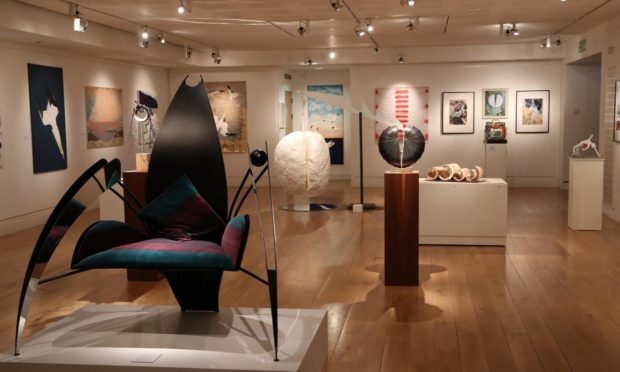A new exhibition of paintings, sculptures and photographs showing the beauty of Shetland has opened.
The display Rooting, Flowing, Wild is on show at Shetland Museum and Archives’ Gadderie in Lerwick until August.
Local artist Roberta Fulford has created the exhibition, which features more than 40 pieces of art.
She said: “The title of the exhibition is inspired by Virginia Woolf’s words ‘I am rooted, but I flow’, which speaks to me of settling in Shetland but evolving and growing with the ongoing experience of living among its beauty.
“My work also heavily features water, wildlife and wilderness.”
The works have been inspired by the wildlife in Shetland both on land and in the sea, with diving gannets, killer whales and shoals of mackerel making an appearance.
Reflection of living in such a “beautiful wild place”
Ms Fulford added: “The works in this exhibition are a return to my roots, stemming from my 3D design degree specialising in metal and wood.
“After my degree, I branched out into a career in interior architecture, but my focus returned to a more artistic direction when I moved to Shetland eight years ago.
“The past 18 months and their universal challenges led me to throw myself into my creative work full-time, and I am now really excited to exhibit these recent pieces here in Shetland.
“I hope that my paintings and sculpture reflect the awe I feel of living in such a beautiful wild place and will encourage others to take a different look at the natural world around them.”
Each of the pieces uses mixed materials including paint, metal leaf, cast bronze, laser-cut, mirror polished stainless steel, repurposed wood, and 3D printed seaweed-based resin.
A highlight is the Big Insect Chair, which was made with the assistance of local engineers L.E.F. Made from steel and velvet.
Shetland Museum curator Ian Tait added: “The technical prowess and creative range of techniques in this show are something to behold.
“The natural world inspires so many people, but extremely few have the prodigious talent of Roberta.
“Visitors will enjoy the intellectual process of “reading” the work, as much as seeing the pieces themselves.”
